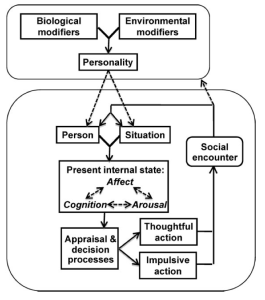
For nearly 20 years, medical researchers, psychologists, and behaviorists, throughout the world have sought to determine if there is a link between the development of aggressive behavior and repeated exposure to violent video games like Battlefield 4 and Call of Duty (see Figure 1). Using research from previous studies on the effects of Violent Media Exposure (VME) on cognitive behavior as the basis of their hypotheses, these well-intentioned medical experts have demonstrated, time and again, that playing violent video games has a residual effect on the brain and the mechanisms responsible for aggressive and violent thoughts and actions. Their conclusions are similar to the one expressed in the article, EFFECTS OF VIOLENT VIDEO GAMES ON AGGRESSIVE BEHAVIOR, AGGRESSIVE COGNITION, AGGRESSIVE AFFECT, PHYSIOLOGICAL AROUSAL, AND PROSOCIAL BEHAVIOR: A Meta-Analytic Review of the Scientific Literature (2001), which states:
” A…review of the video-game research literature reveals that violent video games increase aggressive behavior in children and young adults [italics ours]. Experimental and nonexperimental studies with males and females in laboratory and field settings support this conclusion. Analyses also reveal that exposure to violent video games increases physiological arousal and aggression-related thoughts and feelings. Playing violent video games also decreases pro-social behavior.”
Thus, the consensus of many in the medical research community is that violent video games are harmful to those who play them, and represent a potential threat to public safety when the effects of repeated exposure elicit a violent response.
And yet, in numerous conversations and interviews conducted by BOOM Salad with several long-term, violent video gamers, those who have played violent video games consistently for 10 years or more, we found, without exception, that, contrary to increasing aggression and violent tendencies, these games were seen as providing an almost therapeutic effect upon the player by helping to reduce the anxieties and stresses of daily life.
A clear discrepancy is, therefore, evident between the conclusions of medical research and the experiences of those who routinely play these games. In this, the first of a three-part series on the relationship between aggressive and violent behavior and repeated exposure to violent video games, the BOOM takes a deeper look at the research and inferences that are at the heart of the anti-violent video game argument, beginning with an examination of what is known as the General Aggression Model (GAM, see Figure 2).
